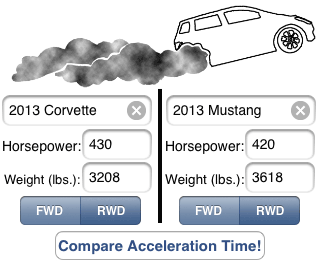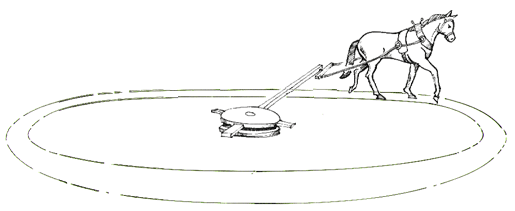What is Horsepower?
|
|
How do you define horsepower? Ask a car enthusiast and most of the time you'll get a blank look, a shrug of the shoulders and maybe a guess along the lines of "What a horse can do!".
That answer begs the question: What horse? A thoroghbred race horse that can carry the small weight of a jockey with a lot of speed, or a working horse that can pull heavy loads albeit slowly? Obviously there is a more precise answer. Car manufacturers, despite their reputation for being creative regarding the horsepower ratings of their products for marketing reasons, require a more stable definition.
 Horsepower is defined as work done over time. The exact definition of one horsepower is 33,000 lb.ft./minute. Put another way, if you were to lift 33,000 pounds one foot over a period of one minute, you would have been working at the rate of one horsepower. In this case, you'd have expended one horsepower-minute of energy.
Horsepower is defined as work done over time. The exact definition of one horsepower is 33,000 lb.ft./minute. Put another way, if you were to lift 33,000 pounds one foot over a period of one minute, you would have been working at the rate of one horsepower. In this case, you'd have expended one horsepower-minute of energy.

|
|
Put into perspective, a healthy human can sustain about 0.1 horsepower. Most observers familiar with horses and their capabilities estimate that Watt was a bit optimistic; few horses could maintain that effort for long.
Although the standard for rating horsepower has been available for over 200 years, clever car manufacturers have found ways to change the ratings of their engines to suit their needs. During the famous horsepower wars of the 1960s, manufacturers could get higher figures by testing without auxiliary items such as alternators or even water pumps. High ratings backfired when insurance companies noticed them and started to charge more for what they saw as a higher risk. Manufacturers sometimes responded by listing lower horsepower figures, forcing enthusiasts to look at the magazine test reports to determine what was going on. In the early seventies the SAE (Society of Automotive Engineers) stepped in with standardized test procedures and the fiqures were more consistent.
Between 1922 and 1947, the Royal Automobile Club used a horsepower rating that was the basis for an automobile tax. The horsepower of an engine was determined by multiplying the square of the cylinder diameter in inches by the number of cylinders and then dividing that figure by 2.5. Using this dubious method, What we know of as a 385 horsepower motor found in the 2001 Z06 Corvette would be rated at only 48.67 hp!
There is a metric horsepower rating, although it is rarely used. The two methods are close, with one SAE horsepower equal to 1.0138697 metric horsepower.
One mechanical horsepower also equals 745.699 watts or .746 kW (kilowatts) of electrical horsepower. This means that if you really want to confuse people, you could complain about the 0.0268 horsepower light bulb your landlord has in the hallway as opposed to the mundane 20 watt measurement.
For more information we recommend http://en.wikipedia.org/wiki/

Suggestions? Comments? Tell us!!! |
Return to
|
